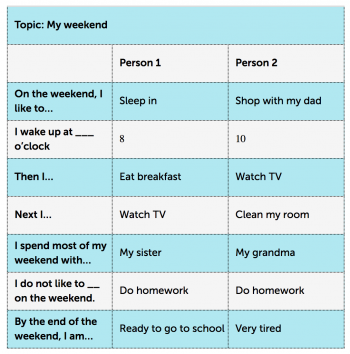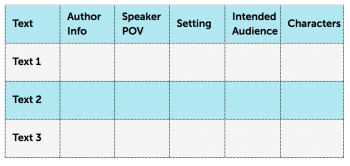What?
When?
Before and after reading
Why?
This strategy helps students explore varying points of view in familiar, comfortable situations, then apply their learning to unfamiliar texts and topics. In a global and multicultural world, children must learn to understand, value and respect different vantage points and perceptions. In literacy development, children need to understand multiple perspectives and voices.
How?
- Start by asking students to think about a real event in their lives that you know is common to all students. See the sample dialog story for suggestions to get students started.
- Have each student describe the event.
- Compare the descriptions as a class. Highlight how details and events vary depending on point of view.
- Select a text from our Student Texts Library to read aloud.
- Ask students to consider who is telling the story and what they know about that person while they are listening.
- Ask students to compare and contrast the following aspects of the text using a matrix or other graphic organizer after the read aloud.
- Speaker/point of view
- Setting
- Purpose of the text
- Illustrations or lack thereof
- Intended audience
- Characters and their roles
English language learners
This strategy begins with a personal experience and provides the opportunity for English language learners to share information about their own lives. Students practice using oral language skills before approaching a more complex reading task. Grouping information thematically in the multiple perspectives matrix allows students to self-pace and drives authentic instruction. This strategy can be modified by encouraging students to provide illustrations in the matrix.
Connection to anti-bias education
Engaging children in conversations about multiple perspectives invites them to “develop the knowledge and language to affirm and accurately describe diversity among people with backgrounds different from and similar to their own” (Anti-bias Standard 6). Examining multiple perspectives addresses, most specifically, the Diversity domain since it allows students to hear and voice different perspectives on issues.
Sample dialogic story:

